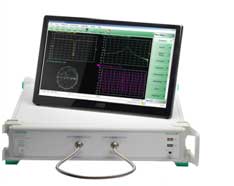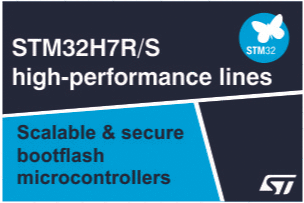
Anritsu changed the way VNAs were viewed by removing the conventional limitations engineers had long accepted.
Vector network analyzers (VNAs) have been used for passive device testing for decades. Many applications require high-priced, high-performance, and full-featured VNA solutions while others only necessitate simple S-parameter and time domain measurements at the lowest possible cost. Unfortunately, engineers in these latter environments have had to use high-priced, full-featured VNAs, because there were no alternatives. In today’s highly competitive world where low cost-of-test and quick time to market are necessities, the added – and unnecessary – cost and complexity associated with these high-end VNAs are unacceptable in many engineering, manufacturing and education environments.
Yet, there has been a void in the market for an economical, high-performance VNA for these basic measurement applications. Fortunately, all that is changing, due to the integration of advanced Non-Linear Transmission Line (NLTL) technology in VNAs.
In traditional sampling VNAs, samplers are gated by pulses generated with a step-recovery diode (SRD) circuit, with the Local Oscillator (LO) and RF source phase-locked to a common frequency reference. By utilizing an alternative architecture that incorporates NLTL samplers and distributed harmonic generators, a new and simpler VNA architecture has been developed. It enables the production of VNAs that are much more cost-effective and have superior performance than those employing fundamental mixing.
In general terms, NLTLs are distributed devices that support the propagation of non-linear electrical waves, such as shocks. NLTLs consist of high-impedance transmission lines loaded with varactor diodes that form a propagation medium whose phase velocity, and thus time delay, are a function of the instantaneous voltage across the diodes. The lower the voltage, the lower the phase velocity and the longer the time delay of a waveform propagating along the non-linear transmission line. Conversely, the higher the voltage, the greater the phase velocity and the shorter the time delay.
Historically, NLTL technology has been used predominantly in pulse-shaping applications and digital oscilloscopes. NLTL now has been refined for high-frequency use and offers marked advantages in millimeter wave applications. These refinements are complemented with novel monolithic broadband directional bridges, multiplexers, and other key component, enabling the production of NLTL-based samplers and distributed harmonic generators suitable for a frequency-scalable VNA architecture.
NLTL-based samplers endow VNAs with various attractive features, including RF and LO frequency scalability, and high channel-to-channel isolation, which underpins high dynamic range. When implemented in modern VNA architectures, NLTL-based samplers offer a number of other benefits, as well. For instance, an important advantage of NLTL-based VNAs is the monolithic integration of their various constituents, including the sampling receivers, distributed harmonic generators, directional bridges, and other key components. The resulting reflectometer modules share the same thermally stable mass. They are also very small, which greatly reduces temperature variations, for excellent short- and long-term stability and longer intervals between calibrations. Eliminating microwave connectors between the various reflectometer components enhances performance while improving system reliability and stability, too.
NLTL technology has also enabled the miniaturization of VNA components so that a VNA-on-a-chip now exists. This creates numerous new VNA applications, including verifying the performance of price-sensitive components during manufacturing.
The development of a brand new category of VNAs, optimized for cost-conscious engineering, production and education environments, shows the value of the fundamental NLTL technology. It also points to a future in which VNAs become as familiar a presence in the factory as they are today in the laboratory.
Shock Line Technology
NLTL commonly referred to as shock line technology forms the basis for the Anritsu high frequency ShockLine VNA.
The Shockline VNA leverage Anritsu’s expertise in two well known areas low cost, high performance, small form factor RF designs and frequency scalable non linear transmission lines (NLTL) technology
The ShockLine VNA marks the interaction of these two technologies to bring a new level of price performance to passive device test environments.
The ShockLine family consists of VectorStar and VNA Master handheld analyzer series. It offers customers greater flexibility when choosing an appropriate solution for their price sensitive applications.
Wide Dynamic range, fast sweep speeds, and full S-parameter and time-domain measurement capabilities make ShockLine VNAs compelling matches for a broad range of customers.
Anritsu recently introduces 3 variants of new line of Shockline VNA family that meets the need for economical VNAs used with manufacturing applications where cost-of-test is primary issue.
The ShockLine™ MS46524A 4-port VNAseries features highaccuracy, fast measurement speed, and low cost, making it suitable for simple engineering and manufacturing applications.
Engineers can conduct key tests, including 16 single-ended and mixed-mode S-parameter measurements, with the ShockLine MS46524A VNAs. Additionally, time domain measurements are available as an option for simple signal integrity testing on high-speed digital boards.Designed to be flexible and cost-efficiently address engineering applications, the ShockLine MS46524A series is available in two models – one which covers the 10 MHz to 4.5 GHz frequency range and a second instrument that extends frequency coverage to 7 GHz.
The ShockLine MS46524A VNA series addresses the market need for high value and performance when making 4-port measurements. Engineers can use the VNA to test multi-band mobile handset components, such as switches and differential SAW filters, verify the performance of RF passive multi-port components, including antennas, duplexers, couplers, isolators, and circulators, and identify signal integrity issues on high-speed digital circuits.
Anritsu Economy ShockLine™ MS46322A series of 2-port Vector Network Analyzers (VNAs) as part of its ShockLine family of VNAs designed specifically to lower the cost of testing RF/microwave passive devices up to 40 GHz. Incorporating a patented shock line VNA-on-chip technology, the Economy ShockLine MS46322A instruments combine low cost and strong performance, making the VNAs well suited for testing cables, connectors, filters, antennas and other passive components used in mobile communications, M2M, and general purpose applications.
Anritsu addresses the market need for value and performance when testing RF passive devices with the introduction of the ShockLine™ MS46522A 2-port RF VNA family with frequency coverage from 50 kHz to 8.5 GHz. The ShockLineMS46522AVNA is designed for testing passive devices such as cables, connectors, filters, and antennas in a wide variety of engineering, manufacturing and education applications.
Applications
RF and Microwave Passive Component Testing and Troubleshooting
• RF and automotive connectors and cables
• Electromechanical switches
• Attenuators
• Couplers
• Filters
• Isolators
• Circulators
• Phase Shifters
System Integration Applications
• System Calibration
• Path-loss Characterization
• General s-parameters and time domain measurements







